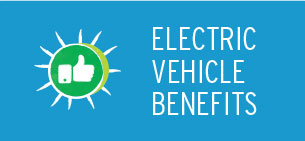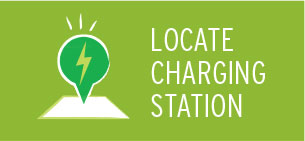
GET CONNECTEDVehicle TypesWhile the internal combustion engine (ICE) continues to be the main power source for road vehicles, the electrification of the automobile is well underway. Significant recent advances in battery, motor and electronics technologies have made it possible for automobiles to utilize electricity from the power grid. These electric vehicles (EVs) encompass a range of technologies and configurations with the two most common being:
Battery electric vehicle (BEV)A battery-electric vehicle is powered only by an electric motor and battery, which charges by plugging into an electrical outlet or connecting to a charging station to store electricity. Plug-in hybrid electric vehicle (PHEV)A PHEV is similar to a conventional hybrid – powered by a gasoline engine and an electric motor. However, unlike traditional hybrids, PHEVs have larger battery packs and can be recharged by plugging into electrical outlets or connecting to charging stations. Hybrid vehicleA hybrid vehicle is powered by a gasoline engine and one or more electric motors. Regular hybrid vehicles have no plug-in capability and rely on energy being captured while the vehicle is being driven to charge their batteries. Although hybrids do make use of batteries and electric motors, they are ultimately powered by gasoline and are not designated as electric vehicles (EVs) for the purposes of this website. More and more automakers – including Mitsubishi, Nissan, GM, Ford, Toyota, Honda and Tesla – are manufacturing a variety of electric vehicles to suit different driving requirements. With technology improving and choice expanding, EVs deserve serious consideration as alternatives to traditional vehicles. Is an electric vehicle (EV) for me?More and more electric vehicles are entering the marketplace, as new and upcoming models are introduced by a wide variety of manufacturers. Here are some advantages EVs provide over regular internal combustion engine (ICE) vehicles. They are:
Preparing for the FutureThe Manitoba government supports the transition to electrified transport (transportation powered by electricity) and the reduction of fossil fuel dependence. The actions Manitoba is taking will ensure the province benefits from what could be the greatest energy revolution in 100 years – electricity-powered transportation. In the worldwide shift to cleaner transportation now underway, Manitoba has these electrifying advantages. We have:Green fuel The right price The infrastructure A habit of plugging in Through a carefully considered approach that is right for Manitoba, the province is seeking the best ways to increase the availability, and speed up the use of, electric vehicles in our daily lives. This would benefit both the economy and our environment. Manitoba’s Electric Vehicle Road Map (www.manitoba.ca/iem/energy/transportation/images/ Plug-in PartnershipsManitoba has engaged automakers, electric technology providers, Manitoba Hydro, Manitoba companies, academic institutions and others to:
Electric Vehicle Advisory CommitteeA multi-stakeholder advisory committee was created to provide recommendations to government on the best ways to prepare for, and speed up the use of, EVs in Manitoba. Government endorsed the Electric Vehicle Advisory Committee’s report – Realizing the Potential Of Electric Vehicles in Manitoba (www.manitoba.ca/iem/energy/transportation/images/ They are:
Electric Vehicle Learning and Demonstration CentreThe Electric Vehicle Technology & Education Centre (EVTEC), created through a collaboration with Red River College and other stakeholders, will enhance Manitoba’s training programs to better prepare students for the future automotive industry. The goal is also to establish Red River College as a Canadian leader in EV testing and research (www.rrc.mb.ca/index.php?pid=8312). Clean energy strategy supports electric vehiclesManitoba’s Clean Energy Strategy (www.manitoba.ca/iem/energy/cleanenergy.html), which calls for less reliance on imported fossil fuels and a decrease in greenhouse gas emissions, supports electrified transport. It also identifies priority actions that build on Manitoba’s advantages in EVs. These priority actions include:
Shifting from gasoline to electricity in the decades to come will re-inject a rising share of the $1 billion in gasoline bills back into Manitoba’s economy. Electric driving will help convert Manitoba’s number one energy weakness (the import of expensive fossil fuel) to its number one strength (its wealth of low-cost, renewable electricity). Manitoba’s electric bus project “showcase” for North AmericaThe province’s electric bus project builds on Winnipeg’s reputation as the bus manufacturing centre of the continent – home to both New Flyer Industries (the leading manufacturer of transit buses) and Motor Coach Industries (the leader in inter-city buses). A showcase for North America, the project will develop and demonstrate an advanced, battery-electric, transit bus, and rapid-charge technologies, under Manitoba’s highly variable climatic conditions. The $3 million project is incorporating battery technologies from Mitsubishi and attempting to validate the bus’s operational capabilities and act as a showcase for potential markets. Manitoba will continue to support the development of the electric bus, and work with partners to expand the project into a multi-bus, charging-system demonstration. The priority is on seeking value-added technology development and component manufacturing. Manitoba Hydro stays current on EV technologiesAt Manitoba Hydro, planning for the anticipated adoption of EVs is ongoing. This includes participating in trials with various manufacturers to ensure Hydro is adequately prepared to meet the demands of EVs and their owners. (www.hydro.mb.ca/environment/electric_vehicles.shtml) Through memberships in national and international EV-industry organizations, Manitoba Hydro gains access to valuable research on common EV standards and industry practices. This knowledge is used to model the potential effects of EV charging on electrical systems. The result is a better understanding of what’s needed to support electric vehicles now and in the future. |


 |
